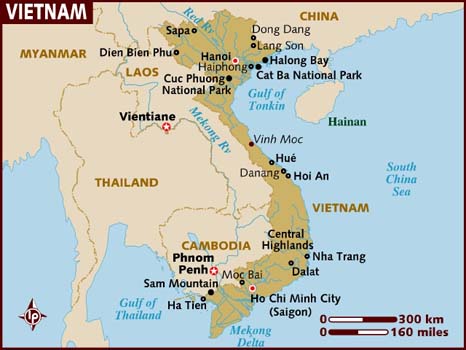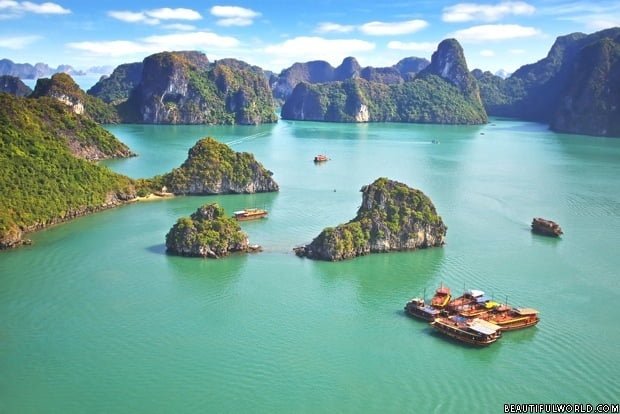Ha Long Bay is an area of extraordinary natural beauty, situated in Vietnam’s Quang Ninh Province, close to the Chinese border. Thousands of islands and islets are scattered in the region, surrounded by pristine, crystal-clear waters. Whilst comparisons are sometimes made with Guilin in China, or Krabi in Thailand, in reality, Ha Long Bay is far more impressive. Suitably, UNESCO recognised the area as a World Heritage Site in 1994.

Legend of Ha Long Bay
The existence of the surreal seascape at Ha Long Bay is oft explained by the age-old legend of foreign raiders from the sea. The story told is that not long after the original Vietnamese settled in the country, raiders began approaching the shores of Ha Long Bay. In response, the Jade Emperor called on a fleet of powerful dragons from the sky to support the people’s resistance. Unlike stories of traditional fire-breathing dragons, the majestic creative spat out a heavy shower of pearls, which upon impact with the ocean, transformed into thousands of rocky islands. The fresh rock formations proved to be a solid defence, as the raiders took their turns to crash and perish one by one. Post-battle, the dragons chose to remain on the coast of Vietnam, with their tails now collectively forming the famous Long Vi beach.
Interesting facts about Ha Long Bay
Scientists provide an alternate explanation to the Dragon legend, suggesting that 500 million years of strong erosive forces have moulded the rocks into a variety of fascinating shapes.
Examples include Voi islet, which closely resembles an elephant, and Ga Choi islet, which looks similar to a pair of fighting cockerels.
Ha Long Bay was first enlisted as a UNESCO World Heritage Site in 1994.
Halong, in Vietnamese, means ‘where the dragon descends into the sea’.
Research indicates that humans have inhabited the area for tens of thousands of years.
Nguyen Tai described Ha Long Bay in a poem written 500 years ago, calling it a ‘rock wonder in the sky’.
When is the best time to visit Ha Long Bay?
The weather in Ha Long Bay is typical for a tropical coastal climate, with two main seasons during the year. The first season runs from April to September, featuring hot, humid weather. The second runs from October to March, featuring dry, cooler weather. During this period, fog is common, which can result in poor visibility, and a spooky, ethereal atmosphere.
Where to stay in Ha Long Bay
In terms of accommodation, Ha Long Bay caters for all tastes and budgets. From luxury hotels to budget hostels, there are a number of great value offerings for visitors to choose from.
How to get to Ha Long Bay
Due to its popularity, Ha Long Bay is easily accessible from almost anywhere in Vietnam. Many tourists choose to arrive on a large international cruise ship, docking in the nearby Cai Lan International Port, which is approximately 10 minutes from Ha Long Bay. Others choose to fly into Hanoi (112mi/180km) or Hai Phong (50mi/80km) airports. Upon landing, a hire car can be arranged, or numerous public transport options are available. For instance, you can take a public bus service from Hanoi to Ha Long City, which will take approximately 3-4 hours.






Spectacular